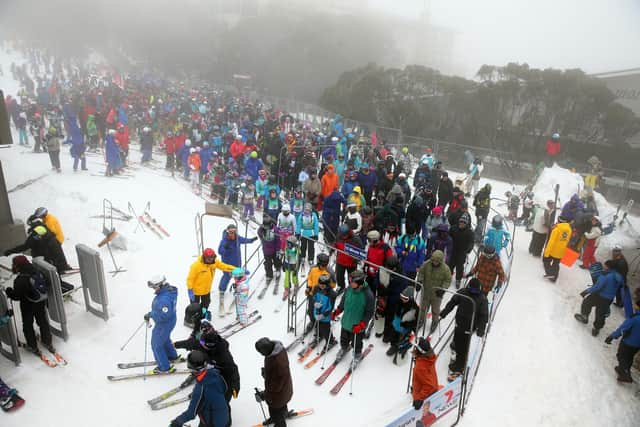Skiing: AI might destroy us, but first it's going to make snowsports better
To put it mildly, artificial intelligence seems to have been making people a little anxious of late. Bang “AI anxiety” into Google (which, by the way, already uses AI to help understand your search queries and determine the most relevant results) and you’ll find pages of research and analysis telling you just how many people are worried about it. Among those panicking: one in three Americans, apparently, which is remarkable when you think of all the other things Americans have to freak out about.
In the same set of search results, you’ll also find companies looking to sell you relaxation tools to deal with this new, potentially monetizable form of stress (like, for example, the company which commissioned the study containing that eye-catching “one in three Americans” stat.)
Advertisement
Hide AdAdvertisement
Hide AdSo what exactly are we all supposed to be knitting our brows over? Well, according to a number of experts in the field canvassed by the US-based Pew Research Center recently, quite a bit. The AI gurus’ very long list of concerns includes mass unemployment due to increased automation, the spread of international crime, as people are increasingly able to perpetrate fraud remotely, and good old-fashioned political chaos, as AI facilitates “mass manipulation of populations”. Oh, and right at the top of the concerns list? “Risk of extinction”, which, no matter how much of an AI fan you are, is a tricky one to put a positive spin on. According to a recent survey of UK adults by the Public First consultancy, 29 per cent of people in this country think there is a risk of “AI trying to take over or destroy human civilisation.” Clearly the “destroy” option would be sub-optimal, but given the levels of political incompetence we’ve been subjected to in recent years, perhaps an AI takeover would be a step in the right direction.


Either way, AI currently has a bit of an image problem, and Hollywood certainly isn’t helping. Witness the recently-released Gareth Edwards film The Creator, set in a dystopian future in which much of humankind is locked in an existential battle with legions of tooled-up AI entities who got the shooting party started by detonating a nuclear bomb above Los Angeles. (To be fair to the AIs, it transpires they set the bomb off due to a human coding error, but still – in the world of the film those kinds of caveats probably wouldn’t cut much ice with the few surviving residents of Southern California.)
So far, so anxiety-inducing. But wait! If we are indeed on the verge of being wiped out by AI armies in the not-too-distant future – either because of some tech bro’s fat-finger coding error or because they take one look at the absolute shambles we’re making of everything and decide the world would be better off without us – well, we might as well have a bit of fun before the end, and what better way to see out the last days of human civilisation than with a bit of skiing or snowboarding?
There’s a kicker, too, because in the few remaining years before AI wipes us all off the face of the planet, it seems that it could have the capacity to make the snow-sliding experience of the average skier or boarder significantly better. So, on the downside: complete annihilation by an army of unfeeling machines. But on the up-side: fun times on the mountain before then. Swings and roundabouts, really.
In fact, AI is already making inroads into the snowsports world. Snowboard bindings manufacturer NOW, for example, has collaborated with Addit-ion design studio to create an entirely AI-generated, 3D-printed snowboard binding. Dubbed “The A.I. BINDING" (presumably they didn’t use AI to come up with the name), the result is 25 per cent lighter than NOW’s current top-of-the-range model, and optimised for aggressive turns. Similarly, Original+, a ski manufacturer based in Salzburg, is now using AI to make custom skis. An AI system developed in-house takes into consideration a skier’s biometrics, preferred skiing location and skiing style and then designs a pair of skis based on those factors.
There are other applications too. Last winter, the Swiss Institute for Snow and Avalanche Research revealed that they had trained a computer programme to generate avalanche forecasts which are just as accurate as those written by human forecasters. Their AI tool had been loaded with two decades’ worth of weather and forecast data, and, they explained, had been used as a “second opinion” by professional forecasters since the winter of 2021/22. Meanwhile, at Winter Park resort in Colorado, a company called PyxisAI has installed cameras and other technology around the loading and unloading areas of the Gemini lift. The goal: develop a technology that can anticipate potential problems during the loading and unloading process and either alert the lift operator before they occur or slow or stop the lift to prevent injury. Not only does that mean less people getting hurt, it should also translate into shorter lift lines.
So yes – the robots may well be coming for us at some point. In the meantime, though, at least they look set to improve our days on the hill.
.
